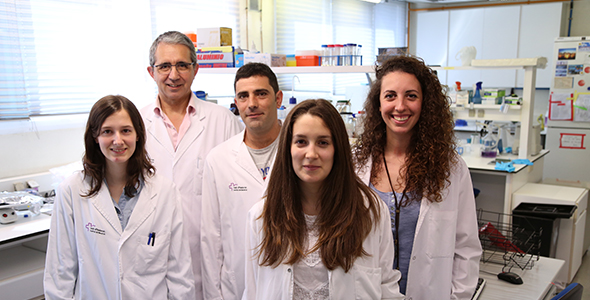Epidemiology, Pharmacology, New Therapies & Clinical Research
Cell and Gene Therapy
Jordi Barquinero Mañez
Researchers Lluís Martorell Cedrés, Silvia Casacuberta-Serra, Marta Parès Casellas, Elisabet Coves Xamena, Maria Fariña Gil


Summary
In the context of an European consortium that we coordinate, we have established a cellular model of Royal Disease (RD), a form of hemophilia B that ran in the European royal families during the 19th and 20th centuries. With this model, that was based on induced pluripotent stem cells (iPSCs) from a hemophilic patient carrying the RD mutation, that were differentiated to “hepatocyte-like” cells, we have been able to characterize the RD mutation (that impairs the correct splicing) at the RNA level.
In addition, in collaboration with the group of Drs. C. Espejo and X. Montalban (Clinical Neuroimmunology Unit) we have found that myeloid-derived suppressor cells (MDSCs) transduced with an autoantigen induce tolerance in a murine model of multiple sclerosis (EAE). These cells induce apoptosis in vitro in CD4+ T cells from EAE mice, reduce the proportions of activated T cells and increase the proportions of B cells with a regulatory phenotype in vivo.



